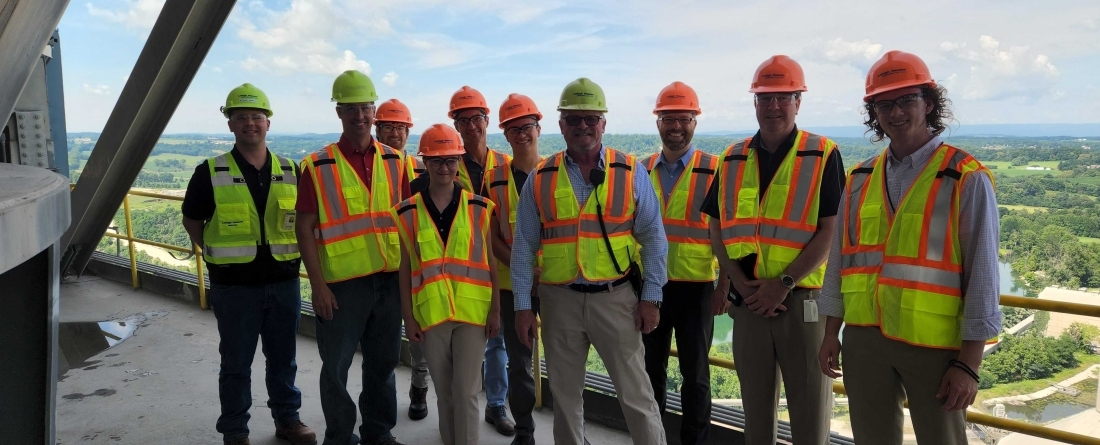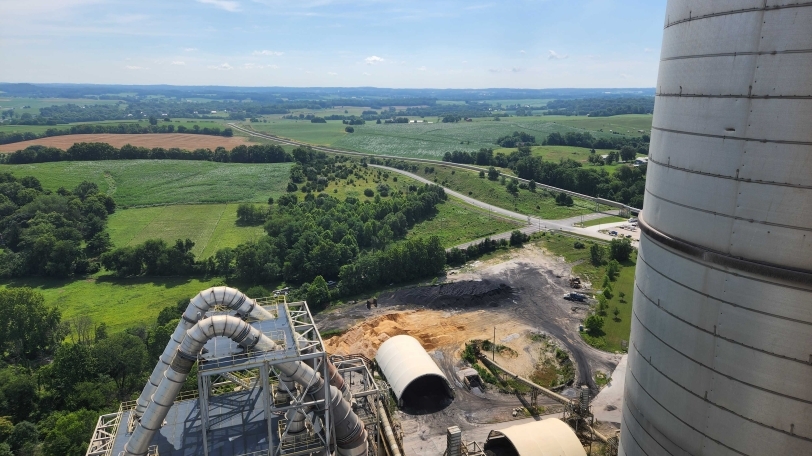
In July, Center for Global Sustainability (CGS) at the University of Maryland staff visited Maryland’s Union Bridge Cement Plant, owned and operated by Lehigh Hanson. In an effort to contribute to Maryland’s climate goals, Lehigh hosted staff from CGS, the Maryland Department of Environment, and the Maryland Department of Labor to tour the facility. During the informational visit, CGS staff facilitated a discussion with attendees and Lehigh leadership about efforts to decarbonize cement production and what the state can do to support those efforts. Lehigh emphasized their desire to reduce its emissions from the plant’s cement production and expressed a willingness to work with CGS and other actors in progressing toward decarbonization.
The State of Maryland recently set an incredibly ambitious climate target, sending a signal domestically and globally that it is ready to lead on climate action. Decarbonizing the manufacturing sector is critical to meeting Maryland’s climate goals, including reducing emissions.
"The visit to the plant was an exciting opportunity to explore areas where industry, state government, and researchers can collaborate to reduce emissions in an important sector," said CGS Postdoctoral Associate Kathleen Kennedy. "To reach Maryland’s ambitious climate goals, it’s important to foster relationships and support companies in decarbonization efforts."
The Lehigh Hanson plant is the largest of its kind in North America and is the largest source of emissions in Maryland’s manufacturing sector. Cement production plants are the state's two highest-emitting manufacturing facilities, accounting for about 35% of total manufacturing emissions. To meet Maryland’s climate targets, emissions must be reduced across key industries, including manufacturing. A variety of policies to prioritize emissions reductions in the manufacturing sector include energy efficiency standards, the use of renewable energy, and the implementation of new technologies like carbon capture utilization and storage (CCUS). Specifically for cement manufacturing at a plant like Lehigh, exploring alternative fuels and substitutive materials for cement production is one way to lower emissions from cement plants.
"Lehigh is dedicated to reducing emissions from cement manufacturing, and we’re looking forward to future joint efforts," expressed Kent Martin, Lehigh's Plant Manager. "If we can produce cement with 7-8% reduced clinker, we should see a 7-8% reduction in CO2 emissions. While there are some obstacles in making progress, we look forward to collaborating with state and local entities to accomplish climate goals."
Subnational actors continue to play a prominent role in climate action. Bottom-up climate leadership has kept the U.S. on a path of progress and will continue to do so with efforts to decrease emissions in key sectors, such as manufacturing and cement production. Partnerships with companies like Lehigh are essential in facilitating collaboration and working towards effective climate solutions. CGS looks forward to collaborating with state partners in the private and public sectors to achieve its climate vision.

